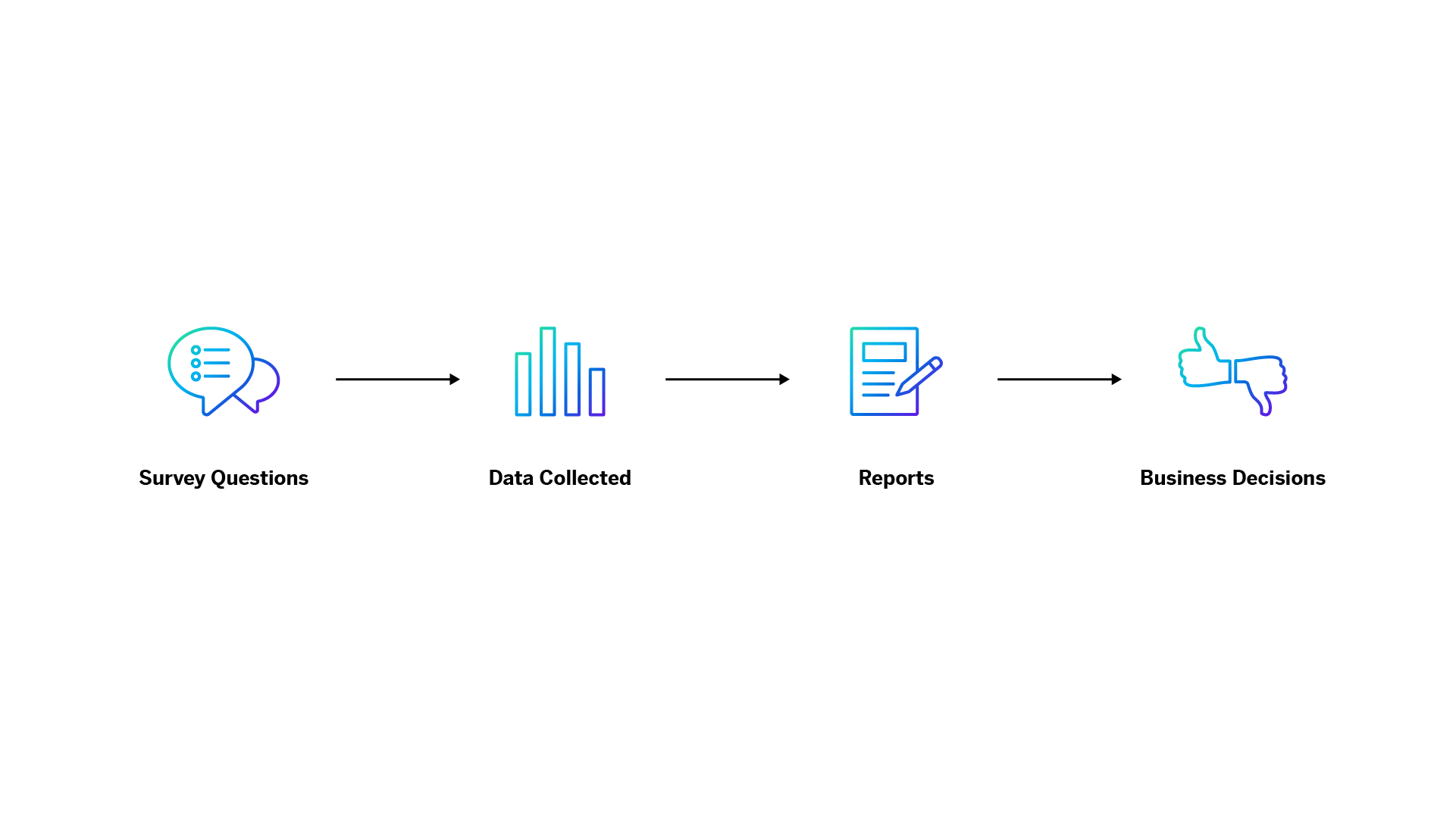In this article:
-
Stages of a Survey Project
-
Understanding the Survey Audience
-
The Impact of Poor Design
Understanding the stages of the end-to-end project is an important place to start to make the right decisions for your survey and project design. The main stages include:
-
Survey Design
-
Survey Build
-
Distribution
-
Data collection and Processing
-
Reporting
-
Decision Making
The goal of a survey project is ultimately to make informed business decisions, present recommendations to executives, or invest in optimizing processes, teams, and products—all investments of valuable resources. For this reason, you need to ensure quality decisions throughout the data collection process.
Arguably, the most important stage is the Survey Design. This is when you create the survey itself which will become the backbone of the remaining parts of the project.
Never rush the Survey Design stage. The survey project is an important part of the experience management operation in a business because it captures the data that is ultimately used for organization-level decision-making. During Survey Design, the decisions you make have significant downstream impacts on the quality and action-ability of business decisions.

Now that you understand that the survey is the backbone of the overall project, you can look more closely at the survey design stage itself. The two main survey audiences to consider during survey design are:
-
The survey builder
-
The survey respondent
A great survey design helps make the survey building process easier (it produces a clear and accurate survey outline to execute in the platform), and also optimizes the survey-taking experience for the respondent (it produces a survey requiring low cognitive load and low effort to complete).
As a survey builder, there is often a tendency to create questions that seem easy and lower effort to build; for example, the use of matrix table/grid questions. However, it is often overlooked that the opposite is true for the respondent audience (the next section contains best practice recommendations for grids). During the design process, always ask yourself what it would be like to answer your questions from the respondent's perspective. When you progress to building the survey in the platform ensure you frequently preview the survey to see the respondent experience first-hand.
Your survey data is populated by the respondent. The way that your survey is designed and built will influence the way respondents answer questions. In aggregate, their answers can significantly impact the quality of your reports.
When a survey is not built with best practices in mind, you can encounter the following pitfalls:
-
When questions are confusing or hard to answer, respondents become more likely to use shortcuts in answering questions. This results in straight-lining or guessing, and the data this produces won’t show the kind of variation that reflects reality.
-
When questions are complex and overbearing, such as long grid questions, respondents make mistakes in answering using the correct cells. At scale, this produces very risky data for decision-making.
-
When surveys are long, respondents skip questions or abandon the survey. This results in fewer responses for the last few questions of your survey, reducing how representative the data is for these questions. Similarly, when respondents skip questions you will have gaps in the completeness of your survey data.
In the next section, you will learn the survey design best practices to help reduce the cognitive load for a respondent, increase completion rates, and collect better quality data.